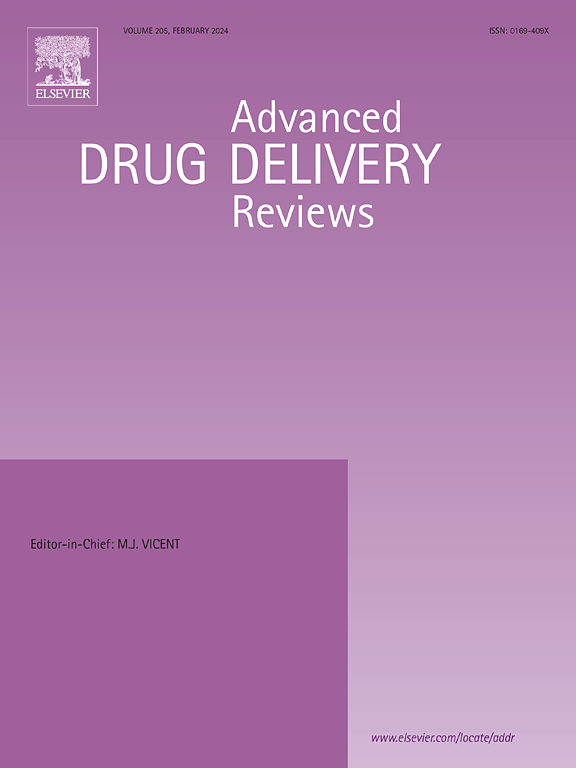A new era in brain drug delivery: Integrating multivalency and computational optimisation for blood–brain barrier permeation
IF 17.6
1区 医学
Q1 PHARMACOLOGY & PHARMACY
引用次数: 0
Abstract
Efficient drug delivery across the blood–brain barrier (BBB) remains a significant obstacle in treating central nervous system (CNS) disorders. This review provides an in-depth analysis of the structural and molecular mechanisms underlying BBB integrity and its functional properties. We detail the role of key cellular and molecular components that regulate selective molecular transport across the barrier, alongside a description of the current therapeutic approaches for brain drug delivery, including those leveraging receptor-mediated transcytosis. Emphasis is placed on multivalency-based strategies that enhance the specificity of nanoparticle targeting and improve transport efficacy across the BBB. Additionally, we discuss the added value of integrating mathematical and computational models with experimental validation for accelerating BBB-targeted delivery systems optimisation.


脑药物输送的新时代:血脑屏障渗透整合多价和计算优化
有效的药物通过血脑屏障(BBB)递送仍然是治疗中枢神经系统(CNS)疾病的一个重大障碍。本文对血脑屏障完整性及其功能特性的结构和分子机制进行了深入的分析。我们详细介绍了调节选择性分子转运的关键细胞和分子成分的作用,以及当前脑药物输送的治疗方法,包括利用受体介导的胞吞作用。重点放在基于多价的策略,以增强纳米颗粒靶向的特异性和提高整个血脑屏障的运输效率。此外,我们还讨论了将数学和计算模型与实验验证相结合的附加价值,以加速针对bbb的输送系统优化。
本文章由计算机程序翻译,如有差异,请以英文原文为准。
求助全文
约1分钟内获得全文
求助全文
来源期刊
CiteScore
28.10
自引率
5.00%
发文量
294
审稿时长
15.1 weeks
期刊介绍:
The aim of the Journal is to provide a forum for the critical analysis of advanced drug and gene delivery systems and their applications in human and veterinary medicine. The Journal has a broad scope, covering the key issues for effective drug and gene delivery, from administration to site-specific delivery.
In general, the Journal publishes review articles in a Theme Issue format. Each Theme Issue provides a comprehensive and critical examination of current and emerging research on the design and development of advanced drug and gene delivery systems and their application to experimental and clinical therapeutics. The goal is to illustrate the pivotal role of a multidisciplinary approach to modern drug delivery, encompassing the application of sound biological and physicochemical principles to the engineering of drug delivery systems to meet the therapeutic need at hand. Importantly the Editorial Team of ADDR asks that the authors effectively window the extensive volume of literature, pick the important contributions and explain their importance, produce a forward looking identification of the challenges facing the field and produce a Conclusions section with expert recommendations to address the issues.

 求助内容:
求助内容: 应助结果提醒方式:
应助结果提醒方式:


